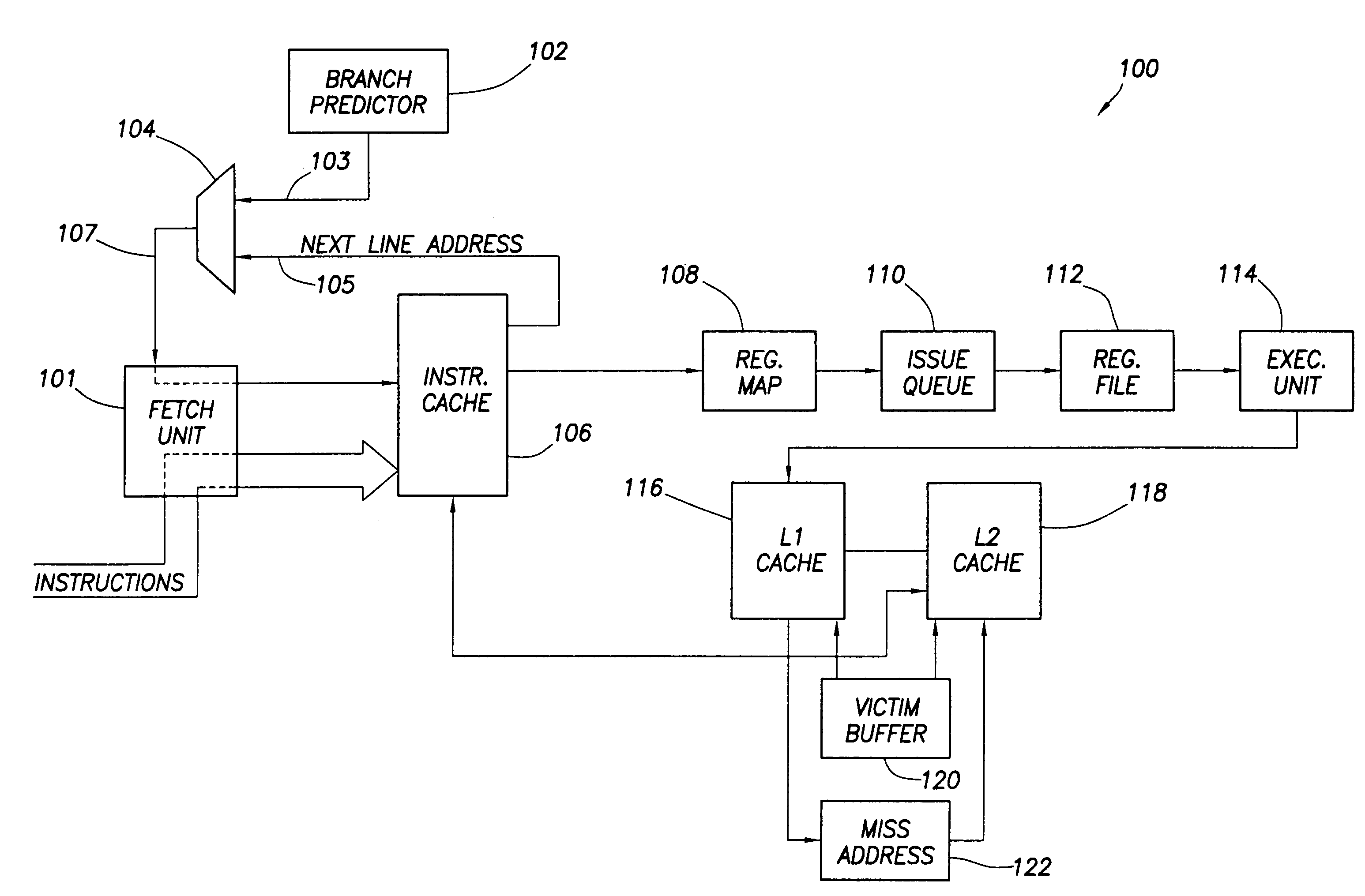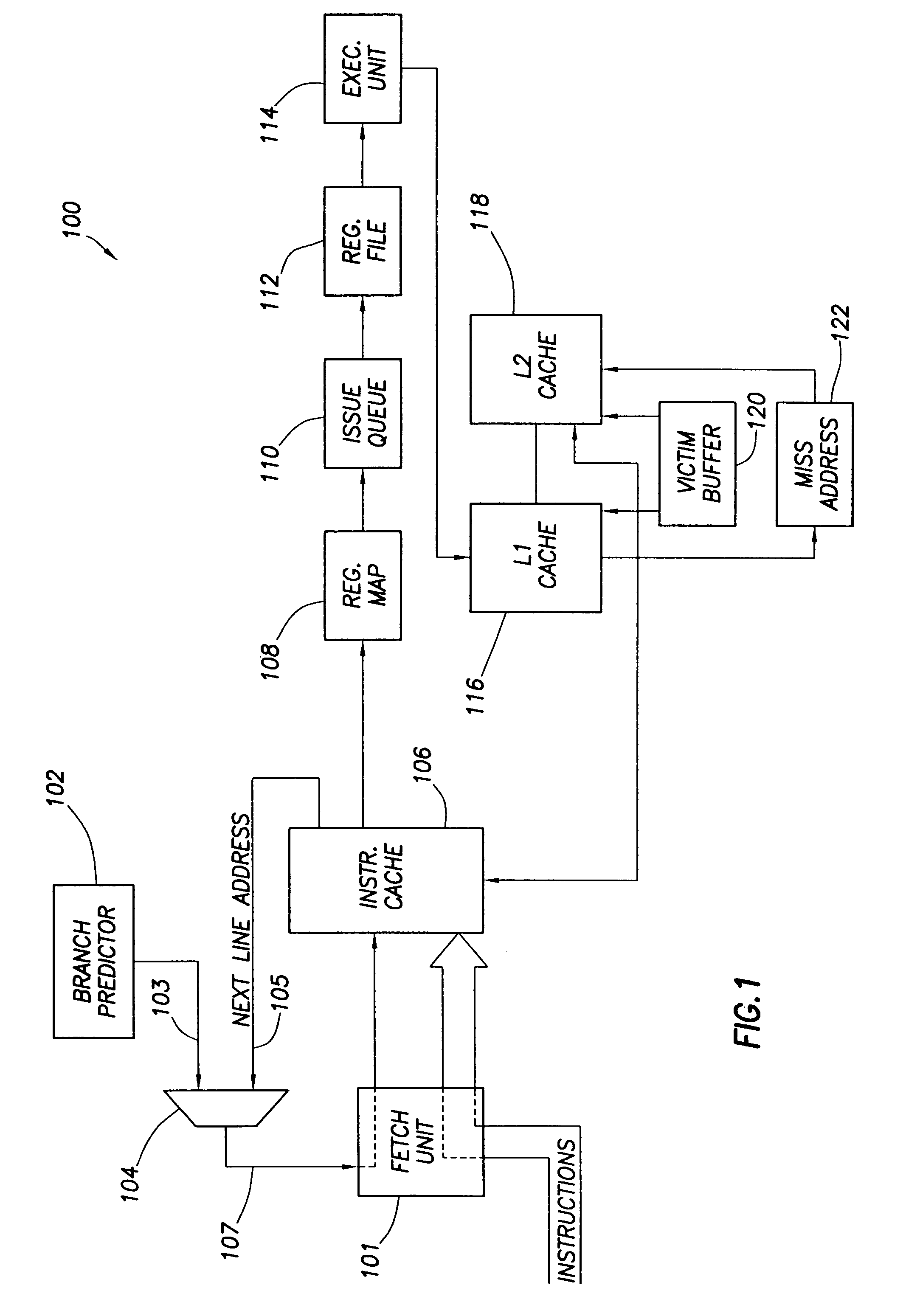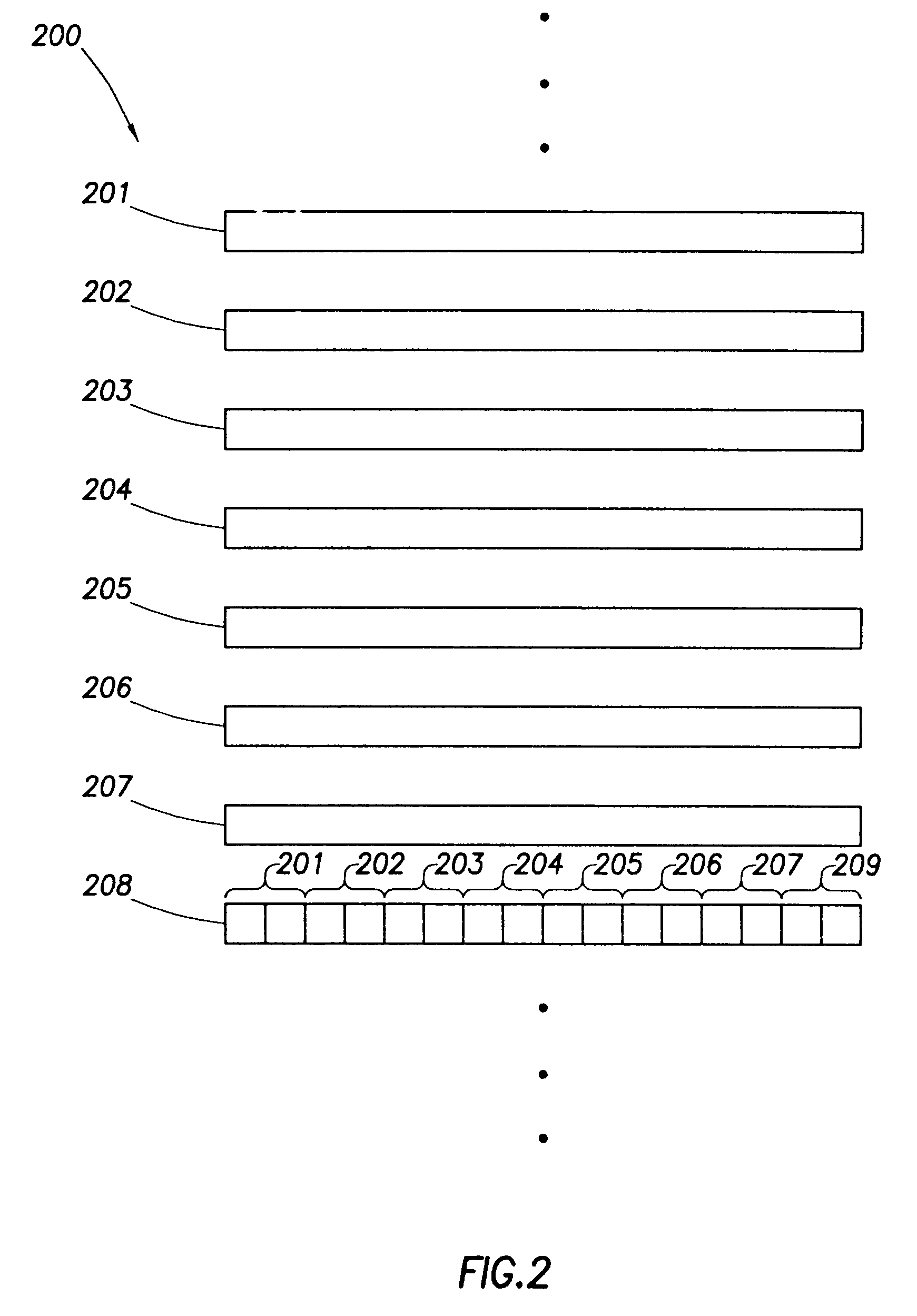Branch prediction combining static and dynamic prediction techniques
a dynamic branch prediction and branch prediction technology, applied in the field of pipelined microprocessors, can solve problems such as increased mispredictions, increased mispredictions, and increased mispredictions, and achieve the effects of reducing the probability of collisions with dynamic branch predictors, and reducing the probability of collisions
- Summary
- Abstract
- Description
- Claims
- Application Information
AI Technical Summary
Benefits of technology
Problems solved by technology
Method used
Image
Examples
Embodiment Construction
[0023]Referring now to FIG. 1, in accordance with the preferred embodiment of the invention, processor 100 generally comprises a fetch unit 101, a branch predictor 102, a multiplexer 104, an instruction cache 106, a register map 108, an issue queue 110, a register file 112, an execution unit 114, an L1 cache 116, an L2 cache 118, a victim buffer 120 and a miss address file 122. Other components (not specifically shown) or different components can be provided as desired. Further, one or more of the components shown in FIG. 1 can be implemented as a plurality of such components. For example, there may be more than one branch predictor 102, register map 108, issue queue 110, register file 112, execution unit 114, victim buffer 120 and miss address file 122. Additional such components may be provided to permit concurrent processing of multiple instructions through the processor. Further, a set of components 108-114 can be provided to process integer-type instructions and another set to ...
PUM
 Login to View More
Login to View More Abstract
Description
Claims
Application Information
 Login to View More
Login to View More - R&D
- Intellectual Property
- Life Sciences
- Materials
- Tech Scout
- Unparalleled Data Quality
- Higher Quality Content
- 60% Fewer Hallucinations
Browse by: Latest US Patents, China's latest patents, Technical Efficacy Thesaurus, Application Domain, Technology Topic, Popular Technical Reports.
© 2025 PatSnap. All rights reserved.Legal|Privacy policy|Modern Slavery Act Transparency Statement|Sitemap|About US| Contact US: help@patsnap.com



